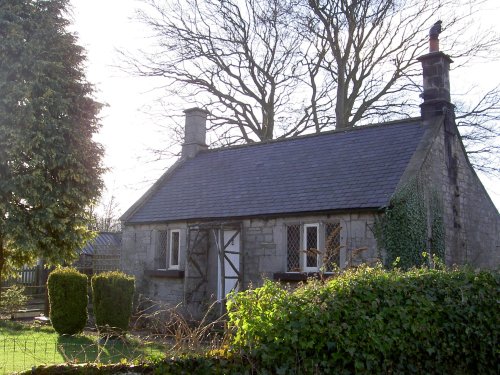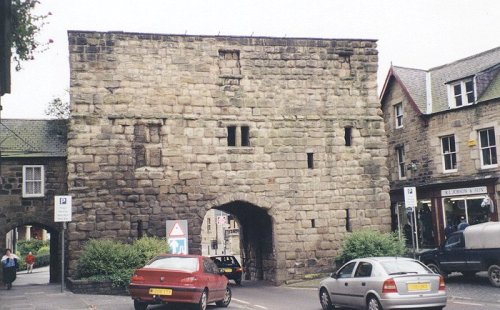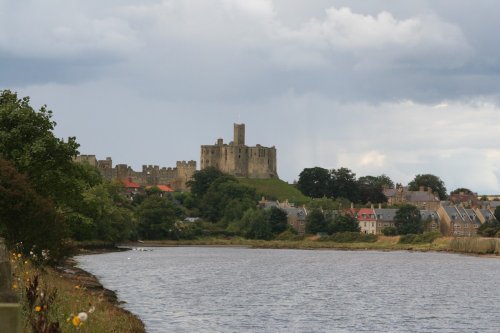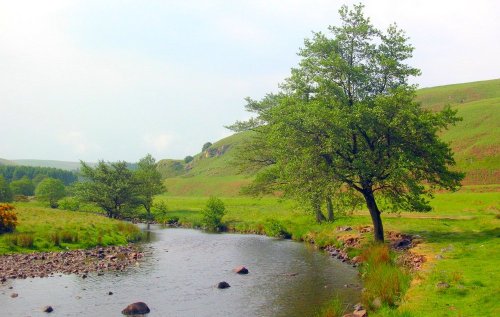Please login or click here to join.
Forgot Password? Click Here to reset pasword
It would be hard to find a more pleasant and peaceful place than Rothbury. This enchanting little market town sits splendidly divided by the River Coquet surrounded by the stunning scenery of the Green Heart of Northumberland. A short distance west of Rothbury lies magnificent Cragside, the home of inventor and industrialist Lord William Armstrong. Cragside was the first house in the country to be lit by hydro-electric power, a fact that must have been a source of fascination to the nearby locals of Rothbury which in the 19th-century, was no more than a village.
Perched high on a rugged rock, Cragside was built as a country retreat. Initially it was a rather plain looking house but alterations and extensions built during a fifteen years period to designs by architect R. Norman Shaw, made it the delightful confection we see today. Throughout his life, Cragside was for William Armstrong a labour of love. It was his genius that made the house one of the most modern of the day. By the 1880's the house had both hot and cold running water, central heating, telephone and fire alarm. Other features included a Turkish bath and a passenger lift. By the time the house was lit by hydro-electric power, sourced by man made lakes, it was being called a Palace of Modern Technology.
Never, one to be daunted, Armstrong also tackled the 30 or so miles of land surrounding the house. A splendid rock garden, said to be one of Europe's largest, tumbles down the valley to Debden Burn. In the valley bottom you can see the tallest Douglas Fir in England. Hidden amongst the trees sprawling the valley is the clock tower. Not only did the clock chime the hour, but it was used to herald the starting time, meal times and finishing time for workers on the estate. It can still be heard today. Millions of trees, bushes and rare and beautiful plants were planted across the barren land so that eventually it was transformed to create lush wooded areas, beautiful lakeside walks and close to the house there are stunning flower-clad formal terraces.
Majestic and picturesque, visiting atmospheric Cragside is to savour the wealth and luxury of a house, not simply ahead of its time but one which was visited by Royalty and the great and the good of the era. Not only is the interior of the house remarkable but so too, is its grand and gracious setting - it is almost surreal, like stepping back in time to a land of lost content.
William Armstrong was born in Sheffield in 1810, he trained to be a Solicitor but became an Engineer instead. He first invented the apparatus for the production of electricity from steam in 1842 and in 1847 he founded the Elswick Engine works at Newcastle-upon-Tyne. He died at his home in the year 1900, he was 90 years of age. There is a Memorial Cross outside All Saints Church, Rothbury, where both Lord and Lady Armstrong are buried.
Cragside belongs to the National Trust, it is open to the public.
The market town of Rothbury is well worth a visit, so too, is the larger town of Morpeth on the River Wansbeck; gateway to the moors.

a Picturesque Village in the county of Northumberland
(2.5 miles, 4.0 km, direction W)This pretty village straggles the banks of the sparkling River Coquet. It is a lively invigorating place, lying amidst the stunning countryside of Simonside, a 1,409 foot high peak...

a Picturesque Village in the county of Northumberland
(9.0 miles, 14.4 km, direction N)Ingram is a small picturesque village on the Breamish river in the Cheviots on the edge of the Northumberland National Park, and as part of Northumberland Dark Sky Park, it has.....

a Historic Market Town in the county of Northumberland
(9.7 miles, 15.7 km, direction NE)Set magnificently in the heart of the beautiful northern countryside is the great castle that has dominated the life and times of Alnwick for centuries...

a Seaside Town in the county of Northumberland
(11.2 miles, 18.0 km, direction E)Sparkling in high summer and tinged with frosty thin ice in winter, the River Coquet makes its final loop before entering the sea at Amble...

a Picturesque Village in the county of Northumberland
(11.9 miles, 19.1 km, direction NE)Alnmouth lies on a coastline famed for its outstanding natural beauty, thus one of its greatest pleasures is found in wandering the coastal paths enjoying uninterrupted sea and coastal views...
All towns in Northumberland
Ancient cup-and-ring marked outcrop and Iron Age hillfort in Northumberland National Park..

See also: The Cheviot Hills
The.....

This magnificent park covers thousands of acres of glorious countryside. It is mostly enclosed by old stone walls, lying just a.....

The vast castle of the Dukes of Northumberland remains very much a family home, a living place that is second only to Windsor.....

Adjacent to Alnwick Castle is the Alnwick Garden. The Alnwick Garden in Northumberland is one of the most exciting contemporary.....